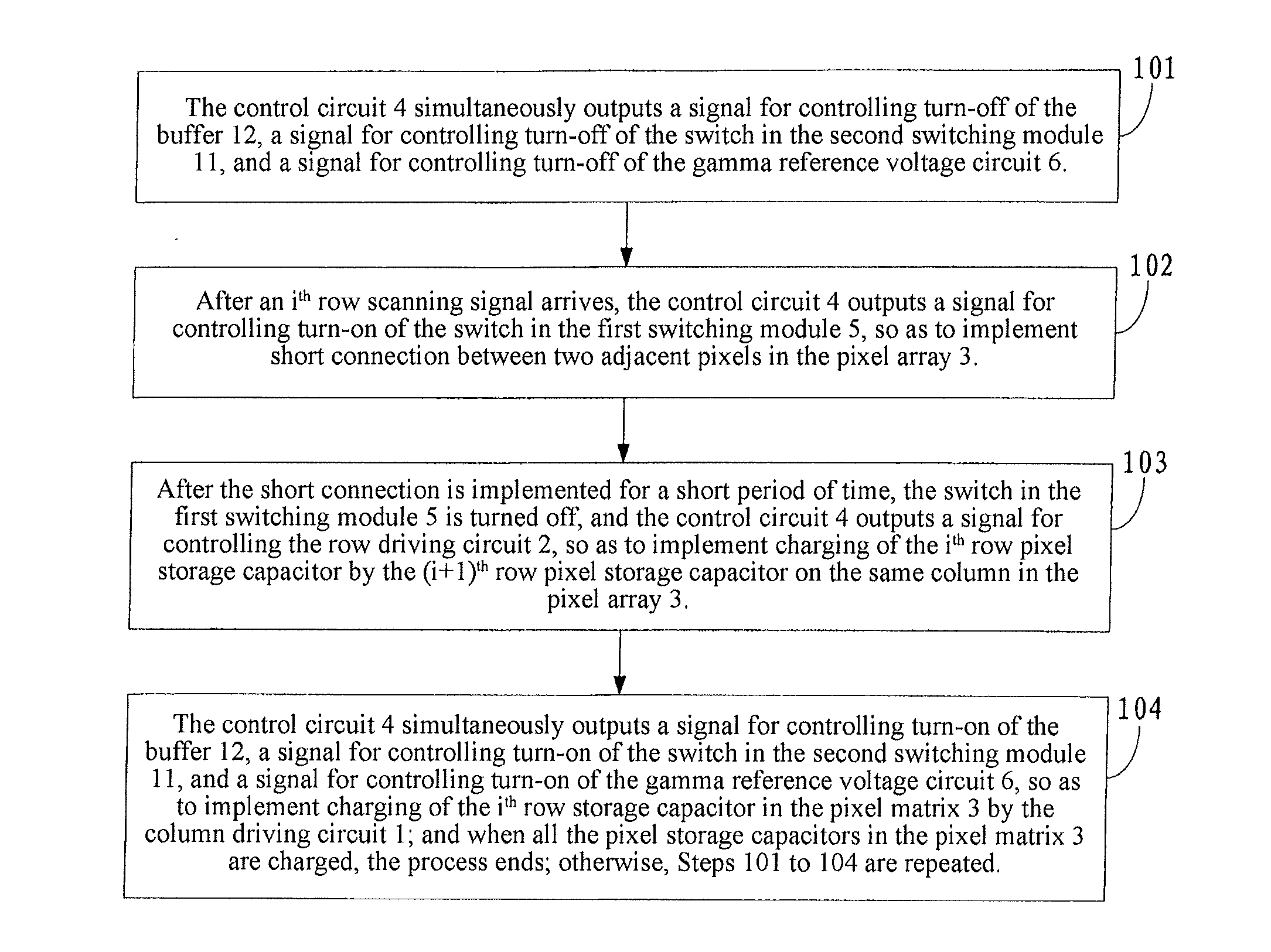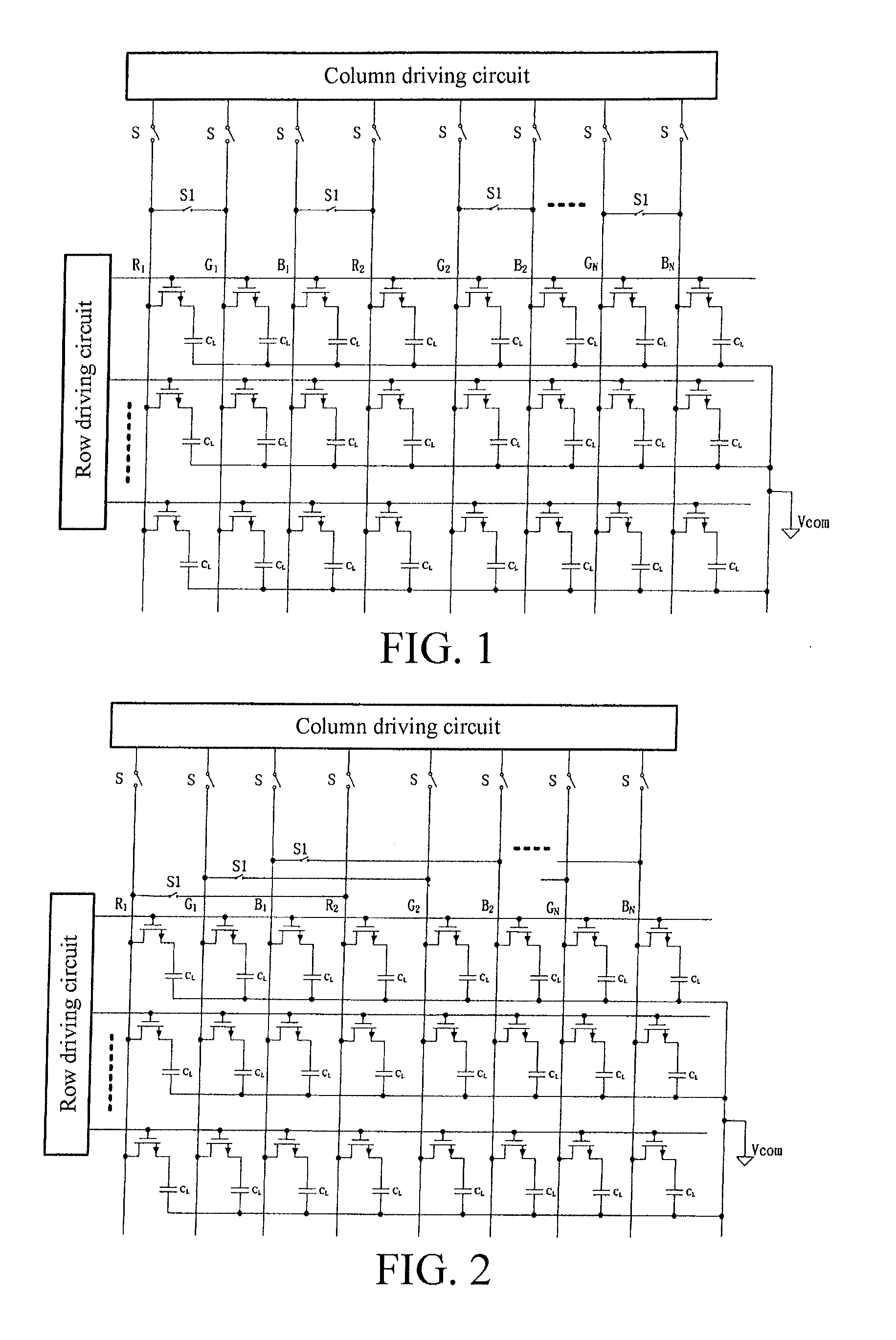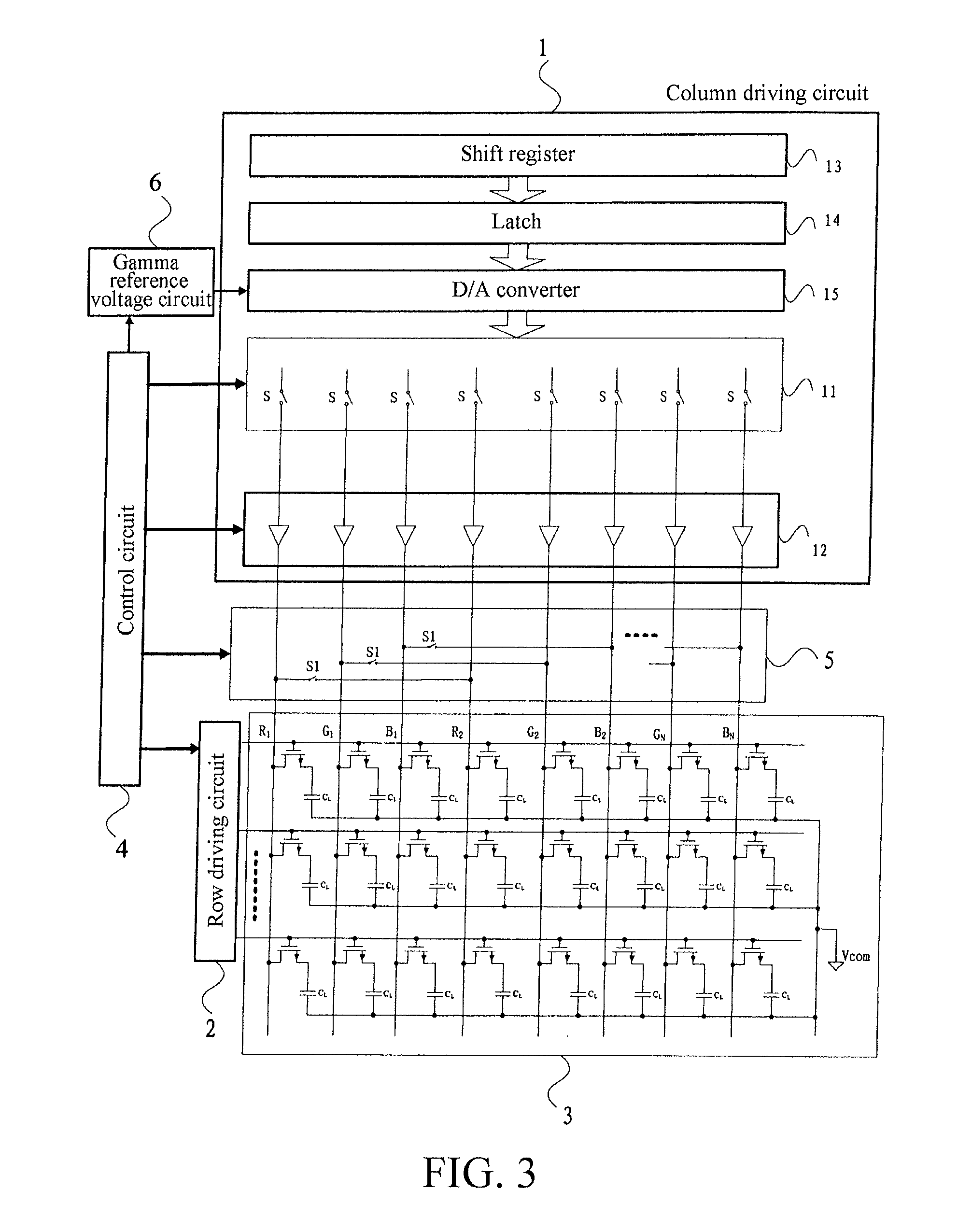Charge sharing system and method of lcos display
- Summary
- Abstract
- Description
- Claims
- Application Information
AI Technical Summary
Benefits of technology
Problems solved by technology
Method used
Image
Examples
embodiment 1
[0032]In order to further reduce the dynamic power consumption of the LCoS driving circuit system, and lower the static power consumption of the column driving circuit and the display system, the present invention provides a charge sharing system of an LCoS display, and the details are described in the following with reference to FIG. 3.
[0033]The spatial correlation of LCD display refers to that the colors of two adjacent pixels are identical or close. As the colors of most areas in an image change gradually, the colors of two adjacent pixels are close or identical in most cases. Therefore, sub-pixels having the same color attribute in the two adjacent pixels (each pixel consists of three consecutive sub-pixels) have the same voltage amplitude but opposite polarities. The temporal correlation of the LCD display refers to that displayed images of two consecutive frames are identical or close, so that the sub-pixels having the same color attribute in the two pixels have the same volta...
embodiment 2
[0044]In order to further reduce the dynamic power consumption of the LCoS driving circuit system, and lower the static power consumption of the column driving circuit and the display system, the present invention provides a charge sharing method of an LCoS display, and the details are described in the following with reference to FIG. 3 and FIG. 4.
[0045]101: The control circuit 4 simultaneously outputs a signal for controlling turn-off of the buffer 12, a signal for controlling turn-off of the switch in the second switching module 11, and a signal for controlling turn-off of the gamma reference voltage circuit 6.
[0046]Specifically, when the LCoS displays a dynamic image, after the previous driving process is completed, the control circuit 4 outputs a signal for controlling turn-off of the switch in the second switching module 11 of the column driving circuit 1, so that the column driving circuit 1 and the pixel matrix 3 are disconnected, and simultaneously outputs a signal for contr...
PUM
 Login to View More
Login to View More Abstract
Description
Claims
Application Information
 Login to View More
Login to View More - R&D
- Intellectual Property
- Life Sciences
- Materials
- Tech Scout
- Unparalleled Data Quality
- Higher Quality Content
- 60% Fewer Hallucinations
Browse by: Latest US Patents, China's latest patents, Technical Efficacy Thesaurus, Application Domain, Technology Topic, Popular Technical Reports.
© 2025 PatSnap. All rights reserved.Legal|Privacy policy|Modern Slavery Act Transparency Statement|Sitemap|About US| Contact US: help@patsnap.com



